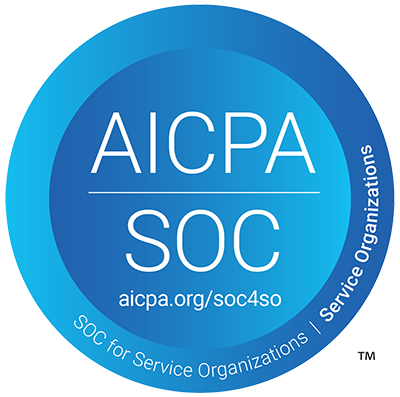Suboxone vs Methadone
Suboxone (buprenorphine/naloxone) and methadone are both medications approved by the FDA for the treatment of opioid use disorder. Which is right for you? (Note that Workit Health providers do not prescribe methadone.)
Suboxone FAQs
Suboxone is a brand name for an FDA-approved medication (buprenorphine/naloxone) used to treat opioid addiction. Other brand names include Zubsolv and Bunavail, and generic options are also available. Buprenorphine/naloxone is endorsed by the Substance Abuse and Mental Health Service Administration as an effective method of treatment for opioid addiction treatment.
Suboxone (buprenorphine/naloxone) helps to alleviate the brain’s dependence on opioids, like heroin, fentanyl, and other prescription pain relievers, while also reducing withdrawal symptoms and cravings. Suboxone (buprenorphine/naloxone) is part of a group of interventions called medication-assisted treatment used to treat opioid use disorder.
Methadone FAQs
Methadone is the oldest medicine approved by the FDA to treat opioid use disorder. It is a full opioid agonist and a Schedule II controlled substance. Despite some lingering stigma, when it is taken as prescribed, methadone is safe and effective. It is endorsed by the Substance Abuse and Mental Health Service Administration as an effective method of treatment for opioid addiction treatment. Methadone helps individuals achieve and sustain long-term recovery.
How does Suboxone work?
Suboxone (buprenorphine/naloxone) is a medication used to sustain recovery from opioid use disorder. It is called a partial opioid agonist, meaning it works in a similar way to opioids by binding to opioid receptors in the brain which causes limited pleasurable effects to stop withdrawal symptoms. However, it won’t provide the “high” associated with opioids like heroin. Suboxone also contains naloxone (known by the brand name Narcan), which is an opioid antagonist meaning it blocks opioid receptors, preventing misuse.
Bottom line, Suboxone (buprenorphine/naloxone):
- Helps alleviate withdrawal symptoms
- Reduces cravings for opioids
- Prevents misuse of Suboxone and/or other opioids
- Decreases the risk of relapse
Like other medication-assisted treatments, Suboxone (buprenorphine/naloxone) is often prescribed alongside behavioral therapy, which has been found to be most effective in the treatment of opioid addiction. You can read more about the science of Suboxone (buprenorphine/naloxone) in our blog.
How does methadone work?
Methadone is a long-acting opioid agonist. It occupies and activates the opioid receptors in the brain, but does so more slowly than other opioids. In this way, therapeutic doses of methadone usually don’t produce a euphoric effect, or the “high” that fuels the dangerous using cycle of illicit opiates. Methadone reduces cravings and withdrawal symptoms, and blunts the effects of opioids.
Bottom line, methadone:
- Helps reduce withdrawal symptoms
- Lessens cravings for opioids
- Decreases the risk of relapse
Do I have to stop taking opioids to take Suboxone?
Yes. According to the American Society of Addiction Medicine, you will need to prepare for your first dose of medication-assisted treatment containing buprenorphine. This means stopping using opioids for a specified amount of time before you take Suboxone (buprenorphine/naloxone) in order to prevent unpleasant side effects. That time period depends on whether the opioid you have been taking is a short-acting or long-acting opioid. Generally speaking, short-acting opioids like Percocet, heroin, and Vicodin should be ceased 12-24 hours before your first dose. Longer-acting opioids, like morphine, methadone, and Oxycontin are generally discontinued 36-48 hours before your first dose of Suboxone (buprenorphine/naloxone).
The key is checking in with an experienced physician licensed to prescribe this medication, who can advise you of the appropriate time frame based on your unique medical history.
Do I have to stop taking opioids to take methadone?
Yes, you need to stop taking opioids if you are using methadone treatment. Combining the two can create a dangerous sedative effect and respiratory depression. Talk to your doctor if you take other opioids while you’re receiving methadone.
What are the side effects of Suboxone?
Like with any medication, some people experience side effects when taking Suboxone (buprenorphine/naloxone). These may subside over time. Common side effects include:
- numbness or pain in the mouth
- dental problems
- mouth redness
- dizziness
- headache
- numbness or tingling
- sleep problems
- stomach pain
- vomiting
- constipation
- drowsiness
- difficulty concentrating
What are the side effects of methadone?
As with other medications, some people experience side effects when taking methadone. These may subside over time. Common side effects include:
- restlessness
- nausea or vomiting
- slow breathing
- itchy skin
- heavy sweating
- constipation
- sexual problems
What form does Suboxone come in?
Suboxone is a sublingual film—a thin, flat rectangle designed to be dissolved under the tongue. Other brands of buprenorphine/naloxone come in the form of sublingual films and tablets. It is important to allow the medication to fully dissolve under the tongue or against the cheek (not chewing or swallowing) in order to receive the full dosage, as buprenorphine is not absorbed well in the stomach or intestines.
How form does methadone come in?
Methadone comes in several forms. Taken daily for opioid use disorder, it is available in liquid, powder, and pill forms. It is usually taken once per day.
Why is there naloxone in Suboxone?
You may have heard of naloxone under the brand name Narcan. Narcan and other naloxone-only formulations are life-saving medications that can reverse an opioid overdose almost instantly. This means that if someone has too much of an opiate in their system, naloxone will bind more strongly to those receptors, knocking them free and reversing a potentially fatal overdose.
As mentioned above, Suboxone (buprenorphine/naloxone) is taken sublingually (placed under the tongue and allowed to dissolve). This is because buprenorphine is absorbed really well under the tongue. Naloxone, however, does not absorb well sublingually. When you take Suboxone as prescribed, the naloxone is essentially doing nothing. It is only is Suboxone (buprenorphine/naloxone) is taken inappropriately that naloxone will kick in, blocking an illicit high or overdose. This is included to make Suboxone (buprenorphine/naloxone) less likely to be diverted or misused.
Transitioning from methadone to Suboxone
If you want to switch from methadone to buprenorphine, most doctors recommend that you taper down to as low a dose as possible before making the switch—at least 30 milligrams. Experts have noted that some patients may need to taper to an even lower dose. This can be frustrating for patients on high doses of methadone because tapering comfortably can take several months to a year (or longer) depending on your dose and how well you tolerate the decrease. But it’s important to be patient with this process. Trying to decrease your dose too quickly will only increase your likelihood of relapse, and cause you unnecessary discomfort.
Do not attempt to switch from methadone to buprenorphine without medical guidance.
When you reach a low enough dose of methadone, your clinician will guide you in inducting on a low dose of Suboxone (buprenorphine/naloxone). When using this method, your provider will direct you to take your (low) beginning dose, wait one hour to see how you tolerate it, and then take your next dose at the same amount if there are no side effects. This process is important, because there may still be enough methadone in your system to trigger precipitated withdrawal.

Judgment free online recovery
Don’t struggle alone, the help you need is available right through your smartphone.
What sets us apart
- We're founded by people in recovery, with many staff in recovery
- Our judgment-free clinicians won't remove you from the program for going off-course
- We've helped 23k+ people since 2015
- We treat you as a whole person, including co-occurring conditions like anxiety, depression, insomnia, and more
- Our members are part of a close-knit, online community, with weekly support groups and private online forums
- Our treatments are evidence-based and backed by science
Citations
1. Buprenorphine. Substance Abuse and Mental Health Services Administration (SAMHSA). https://www.samhsa.gov/medication-assisted-treatment/medications-counseling-related-conditions/buprenorphine. Accessed November 2021.
2. Davis, C. S., & Samuels, E. A. (2021). Continuing increased access to buprenorphine in the United States via telemedicine after COVID-19. The International Journal on Drug Policy, 93: 102905. https://doi.org/10.1016/j.drugpo.2020.102905
3. Barnett, P.G., Rodgers, J.H., & Bloch, D.A. (2001). A meta-analysis comparing buprenorphine to methadone for treatment of opiate dependence. Addiction, 96: 683-690. https://doi.org/10.1046/j.1360-0443.2001.9656834.x
4. Whelan, P.J. & Remski, K. (2012). Buprenorphine vs methadone treatment: A review of evidence in both developed and developing worlds. J Neurosci Rural Pract, 03(01): 45-50. https://doi.org/10.4103/0976-3147.91934
5. Does Suboxone show up on a drug test? Drugs.com. https://www.drugs.com/medical-answers/suboxone-show-drug-test-3535355/. Accessed November 2021.
6. Fiellin, D. A., Moore, B. A., Sullivan, L. E., Becker, W. C., Pantalon, M. C., Chawarski, M. C., Barry, D. T., O’Connor, P. G., & Schottenfeld, R. S. (2008) Long-Term Treatment with Buprenorphine/Naloxone in Primary Care: Results at 2–5 Years, American Journal on Addictions, 17:2, 116-120, https://doi.org/10.1080/10550490701860971
7. Methadone. Substance Abuse and Mental Health Services Administration (SAMHSA). https://www.samhsa.gov/medication-assisted-treatment/medications-counseling-related-conditions/methadone. Accessed November 2021.
8. Joseph, H., Stancliff, S., & Langrod, J. (2000). Methadone maintenance treatment (MMT): a review of historical and clinical issues. Mt Sinai J Med. 67:5-6, 347-364.
Our pages are medically reviewed and fact-checked by accredited medical professionals to ensure that all statements about medical conditions, symptoms, treatments, procedures and tests, standards of care, and typical protocols are accurate and reflect current guidelines as well as the latest research. However, please remember that the information on this page is for informational purposes only and is not intended to replace or substitute for any medical or other advice. Workit Health, Inc. and its affiliated professional entities make no representations or warranties and expressly disclaim any and all liability concerning any treatment, action by, or effect on any person following the general information offered or provided on this page. If you have specific concerns or a situation arises in which you require medical advice, you should consult with an appropriately trained and qualified medical services provider.




